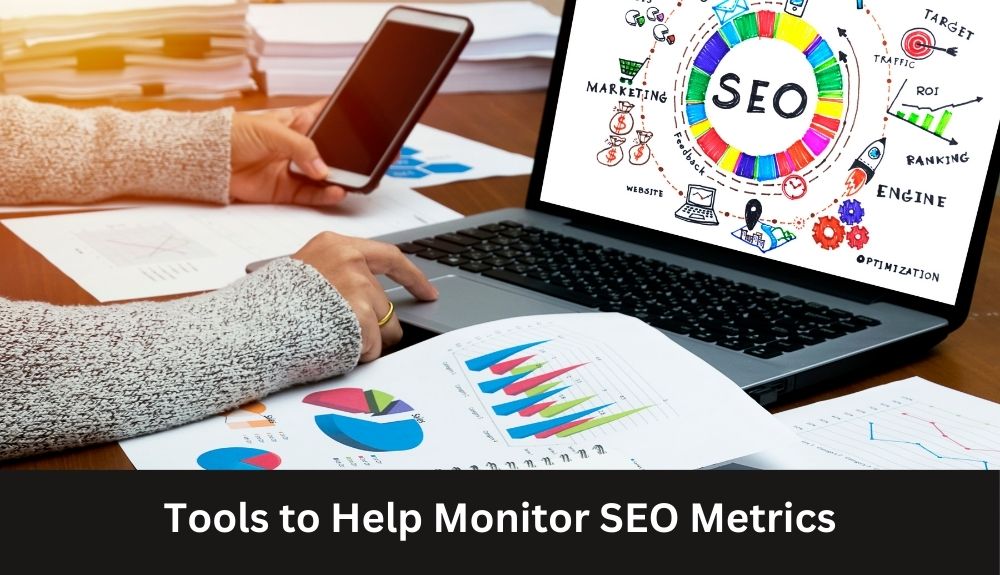Whether you’re a seasoned website owner or just starting out, understanding the ins and outs of Search Engine Optimization (SEO) is crucial for success in today’s digital landscape. And while there are countless factors that contribute to your site’s SEO performance, monitoring key metrics is essential to stay on top of your game.
In this blog post, we’ll explore the top SEO metrics that every website owner should monitor. From organic search traffic and keyword rankings to backlinks and conversion rates, we’ll unveil the secrets behind measuring these critical indicators. So grab your notebook and let’s dive into the world of SEO analytics!
The Top SEO Metrics to Monitor
When it comes to monitoring SEO performance, there are several key metrics that deserve your attention. The first metric is organic search traffic, which refers to the number of visitors who find your website through search engine results pages (SERPs). By tracking this metric, you can gauge the effectiveness of your SEO strategies and see if your efforts are driving more people to your site.
Next up is keyword rankings. This metric tells you where your website ranks in search engine results for specific keywords or phrases. Monitoring keyword rankings allows you to identify potential areas for improvement and make necessary adjustments to optimize your content for better visibility.
Backlinks also play a crucial role in SEO. These are links from other websites that direct users back to yours. By keeping an eye on the quantity and quality of backlinks, you can assess the authority and credibility of your site in the eyes of search engines.
Another important metric is bounce rate and time on page. Bounce rate measures how many visitors leave your site after viewing just one page, while time on page indicates how long users spend engaging with your content. Monitoring these metrics helps you understand if visitors are finding value in what they see or if changes need to be made to improve user experience.
Page load speed is another vital aspect of SEO that often gets overlooked. Slow-loading pages not only frustrate users but also impact search engine rankings negatively. Keeping track of page load speed ensures that potential customers don’t abandon ship before even getting a chance to explore what you have to offer.
Conversion rates and goals should never be ignored when monitoring SEO metrics. Conversion rates indicate how successful you are at turning visitors into customers or achieving other desired actions such as newsletter sign-ups or form submissions. Setting measurable goals allows you to track progress over time and make data-driven decisions for optimization.
By regularly monitoring these top SEO metrics, website owners can gain valuable insights into their online presence’s performance and take actionable steps towards improving their search engine rankings and overall website success.
Organic Search Traffic
Organic search traffic is a vital SEO metric that every website owner should pay close attention to. It refers to the visitors who land on your website through unpaid, organic search results on search engines like Google.
Monitoring organic search traffic can provide valuable insights into the effectiveness of your SEO efforts. By tracking this metric, you can determine how well your website is ranking in search engine results pages (SERPs) and if your optimization strategies are driving targeted traffic.
One way to measure organic search traffic is by using tools like Google Analytics. This powerful tool allows you to analyze various aspects of your website’s performance, including the number of visitors coming from organic searches. You can also gain insights into which keywords are driving the most traffic and identify opportunities for improvement.
Tracking organic search traffic over time helps you understand trends and patterns in user behavior. For instance, if you notice a sudden drop in organic traffic, it could be an indicator that something went wrong with your SEO strategy or there may be technical issues with your website.
Regularly monitoring this metric enables you to make data-driven decisions when optimizing your site for better visibility and higher rankings on SERPs. It helps you identify areas where improvements are needed and capitalize on opportunities to attract more qualified leads organically.
Keeping an eye on organic search traffic allows you to gauge the success of your SEO efforts and make informed decisions about improving visibility in SERPs. By understanding how users find and interact with your site through unpaid searches, you can optimize accordingly for better online presence and increased conversions.
Keyword Rankings

When it comes to measuring the success of your SEO efforts, keyword rankings are a crucial metric to monitor. By tracking where your website ranks for specific keywords in search engine results, you can gain valuable insights into your overall visibility and organic traffic potential.
Keyword rankings provide a snapshot of how well your website is performing in relation to targeted search terms. It allows you to see if you are ranking higher or lower compared to competitors and if there have been any significant changes over time.
Tracking keyword rankings can help you identify opportunities for optimization and content creation. If certain keywords are consistently ranking low, it may be an indication that further on-page optimization or link building is needed. On the other hand, seeing improvements in keyword rankings demonstrates that your SEO strategy is effective and generates positive results.
To track keyword rankings accurately, utilize tools like Google Search Console and third-party rank tracking platforms such as SEMrush or Ahrefs. These tools provide comprehensive data on keyword positions along with additional metrics like search volume and competition level.
Regularly monitoring keyword rankings will empower you to make informed decisions about optimizing existing content or creating new ones tailored specifically towards high-value keywords. Remember, staying ahead of the competition requires constant evaluation and adjustment based on these key metrics!
Backlinks
Backlinks are a crucial aspect of any successful SEO strategy. These links, which point back to your website from other reputable sites, not only help drive organic traffic but also improve your site’s authority and credibility in the eyes of search engines. Monitoring your backlinks is essential to ensure that they are high-quality and relevant.
One important metric to track is the number of backlinks pointing to your site. However, quantity alone isn’t enough; you also need to assess the quality of these links. High-quality backlinks come from authoritative websites with strong domain authority and relevance to your niche or industry.
Another key metric is the anchor text used in the backlink. Anchor text refers to the clickable words or phrases that link to your website. It’s essential for this anchor text to be descriptive and include relevant keywords related to your content.
Monitoring the rate at which you acquire new backlinks is also vital. A healthy growth rate indicates that others find value in linking to your site, while sudden spikes or drops may indicate potential issues.
It’s crucial not just to monitor existing backlinks but also actively seek out new opportunities for link building through outreach efforts, guest blogging, and collaborations with influencers in your industry.
Bounce Rate and Time on Page
Bounce Rate and Time on Page are two important SEO metrics that website owners should closely monitor. Bounce rate refers to the percentage of visitors who leave a website after viewing only one page. A high bounce rate could indicate that visitors are not finding what they’re looking for or are experiencing usability issues.
On the other hand, time on page measures how long visitors spend on a particular page before navigating away. This metric can provide insights into the quality and relevance of your content. If users are spending more time on a page, it suggests that they find it engaging and valuable.
By monitoring these metrics, you can identify areas for improvement and optimize your website’s performance. For instance, if you have a high bounce rate, you may need to improve your site’s navigation or enhance the user experience. Similarly, if users are spending less time on specific pages, you might consider revising or updating the content to make it more compelling.
To track these metrics effectively, integrate tools like Google Analytics into your website. These tools provide detailed data about visitor behavior and engagement metrics such as bounce rate and time on page.
Remember that while these metrics offer valuable insights, they should be analyzed in conjunction with other factors such as organic search traffic and conversion rates to get a comprehensive understanding of your website’s performance.
Stay tuned for our next blog section where we will discuss another essential SEO metric: Page Load Speed!
Page Load Speed
Page load speed is a crucial SEO metric that every website owner should monitor. It refers to the time it takes for a web page to fully load and display its content. A slow-loading website can lead to higher bounce rates and lower user satisfaction, which in turn can negatively impact your search engine rankings.
First impressions matter, especially in the fast-paced digital world we live in today. If your website takes forever to load, users are likely to click away and seek information elsewhere. In fact, studies have shown that a one-second delay in page load time can result in a 7% reduction in conversions.
So how can you measure and improve your page load speed? One effective way is by using tools like Google PageSpeed Insights or GTmetrix. These tools analyze your webpage’s performance and provide recommendations on how to optimize it for faster loading times.
Some common factors that affect page load speed include excessive server requests, large image sizes, unoptimized code, and slow hosting providers. By addressing these issues, you can significantly improve your website’s loading times and enhance user experience.
Remember that optimizing your page load speed not only benefits SEO but also improves overall user satisfaction. So keep an eye on this important metric and take steps to ensure speedy browsing for your audience!
Conversion Rates and Goals
When it comes to measuring the success of your website’s SEO efforts, tracking conversion rates and goals is crucial. After all, what good is organic search traffic if it doesn’t lead to conversions? By monitoring these metrics, you can gain valuable insights into how well your website is performing in terms of turning visitors into customers.
Conversion rates refer to the percentage of visitors who take a desired action on your site, such as making a purchase or filling out a contact form. This metric tells you whether your website is effectively persuading users to engage with your business. By setting specific goals for each conversion action, you can track and measure their performance over time.
It’s important to regularly analyze your conversion rates and identify any areas that may need improvement. For example, if you notice a high bounce rate on certain pages where conversions are low, it may indicate that there are issues with the design or messaging on those pages.
By understanding which actions lead to conversions and optimizing those elements accordingly, you can increase the likelihood of converting more visitors into customers. This could include improving the user experience, refining calls-to-action (CTAs), or simplifying the checkout process.
Remember that conversion rates vary depending on factors such as industry standards and target audience behavior. It’s essential to set realistic goals based on benchmark data from similar businesses in order to accurately assess performance.
In conclusion: Tracking conversion rates and goals provides valuable insights into the effectiveness of your website in driving customer actions. Regularly monitoring these metrics allows you to identify areas for improvement and optimize key elements for increased conversions. Remember to set realistic goals based on industry benchmarks while continuously enhancing user experience and fine-tuning CTAs for better results.
How to Track and Measure These Metrics
One of the most crucial aspects of monitoring your website’s SEO performance is tracking and measuring various metrics. By doing so, you can gain valuable insights into how well your site is performing in search engine rankings and identify areas for improvement. Here are some key strategies to effectively track and measure these metrics.
Utilize analytics tools like Google Analytics to monitor organic search traffic. This metric shows you how many visitors are coming to your site through search engines, providing an indication of your overall visibility.
Keep a close eye on keyword rankings. Monitoring where your website ranks for targeted keywords gives you insight into its visibility in search results and helps identify opportunities for optimization.
Additionally, tracking backlinks is essential as they play a significant role in determining your website’s authority and trustworthiness in the eyes of search engines.
Furthermore, pay attention to bounce rate and time on page metrics. A high bounce rate indicates that visitors are leaving shortly after arriving at your site, while low time on page suggests users aren’t engaging with your content effectively.
Another important metric to measure is page load speed. Slow-loading pages can lead to higher bounce rates and lower user satisfaction—both detrimental factors for SEO performance.
Don’t forget about conversion rates and goals. Tracking these metrics enables you to assess how well your website is driving desired actions from visitors (such as making a purchase or filling out a form).
By consistently monitoring these key SEO metrics using various tools such as Google Analytics or third-party platforms like Moz or SEMrush, you’ll be equipped with valuable data-driven insights that can help inform strategic decisions regarding improving your website’s performance in search engine rankings.
Common Mistakes to Avoid in Monitoring SEO Metrics
When it comes to monitoring SEO metrics, there are some common mistakes that website owners should avoid. These mistakes can hinder the effectiveness of your SEO efforts and prevent you from achieving your desired results.
One common mistake is focusing too much on organic search traffic alone. While organic search traffic is important, it shouldn’t be the only metric you monitor. It’s essential to also track keyword rankings, backlinks, bounce rate, time on page, page load speed, conversion rates, and goals.
Another mistake is relying solely on keyword rankings as a measure of success. While high keyword rankings are desirable, they don’t always translate into increased traffic or conversions. It’s crucial to analyze other metrics like organic search traffic and conversion rates to get a more comprehensive understanding of your website’s performance.
Neglecting backlinks is another blunder many website owners make. Backlinks play a significant role in improving your website’s authority and visibility in search engine results pages (SERPs). Keep an eye on the quality and quantity of backlinks pointing to your site.
Bounce rate and time on page are often overlooked by website owners but can provide valuable insights into user engagement. A high bounce rate indicates that visitors aren’t finding what they’re looking for or having a poor experience on your site.
Page load speed is another vital metric that deserves attention but often gets ignored. Slow-loading pages can lead to higher bounce rates and lower search engine rankings.
Failing to set clear conversion goals or not tracking them properly can impede your ability to measure the success of your SEO efforts accurately. Define specific goals such as newsletter sign-ups or sales conversions and use tools like Google Analytics or other analytics platforms for tracking progress towards these goals.
Avoiding these common mistakes will ensure that you have a well-rounded approach when monitoring SEO metrics for your website.
Tools to Help Monitor SEO Metrics

When it comes to monitoring SEO metrics, having the right tools in your arsenal can make all the difference. These tools not only help you track and measure your website’s performance but also provide valuable insights into areas for improvement. Here are some essential tools that can help you monitor your SEO metrics effectively.
1. Google Analytics: This free tool from Google is a must-have for any website owner. It provides detailed information about your organic search traffic, bounce rate, time on page, and conversion rates.
2. SEMrush: With its extensive keyword research capabilities and competitor analysis features, SEMrush is an invaluable tool for tracking keyword rankings and identifying opportunities to improve your search engine visibility.
3. Moz Link Explorer: Backlinks play a crucial role in SEO success. Moz Link Explorer allows you to analyze the backlink profile of your site and keep track of new links that are pointing to your site.
4. Page Speed Insights: Page load speed is a critical factor in user experience and SEO rankings. Use this tool by Google to identify any issues affecting the loading speed of your web pages.
5. Google Search Console: This tool alerts you to any errors or issues with indexing on your website while providing valuable data on keywords driving organic traffic and click-through rates.
Remember, these tools should be used together as part of a comprehensive approach to monitoring SEO metrics. Regularly review the data provided by these tools to gain actionable insights into how well your website is performing in search engine results pages (SERPs).
Conclusion
Monitoring key SEO metrics is crucial for website owners who want to optimize their online presence and improve their search engine rankings. By tracking organic search traffic, keyword rankings, backlinks, bounce rate and time on page, page load speed, and conversion rates and goals, you can gain valuable insights into your website’s performance.
To effectively measure these metrics, it’s important to use reliable tools such as Google Analytics or other SEO monitoring platforms. These tools provide comprehensive data that can help you make informed decisions about your website’s optimization strategies.
However, it’s easy to fall into common mistakes when monitoring SEO metrics. Avoiding the trap of focusing solely on vanity metrics like total traffic or keyword rankings without considering engagement and conversions is essential. Remember that quality over quantity matters when it comes to driving meaningful results from your SEO efforts.
In addition to avoiding pitfalls in monitoring SEO metrics, using the right tools can greatly simplify the process. Tools such as SEMrush or Moz offer a wide range of features designed specifically for tracking and analyzing key SEO metrics.
In conclusion, regularly monitoring key SEO metrics is essential for any website owner looking to improve their online visibility and drive more targeted organic traffic. By understanding how these metrics impact your website’s performance and making data-driven decisions based on accurate measurements, you’ll be able to stay ahead of the competition in today’s competitive digital landscape











